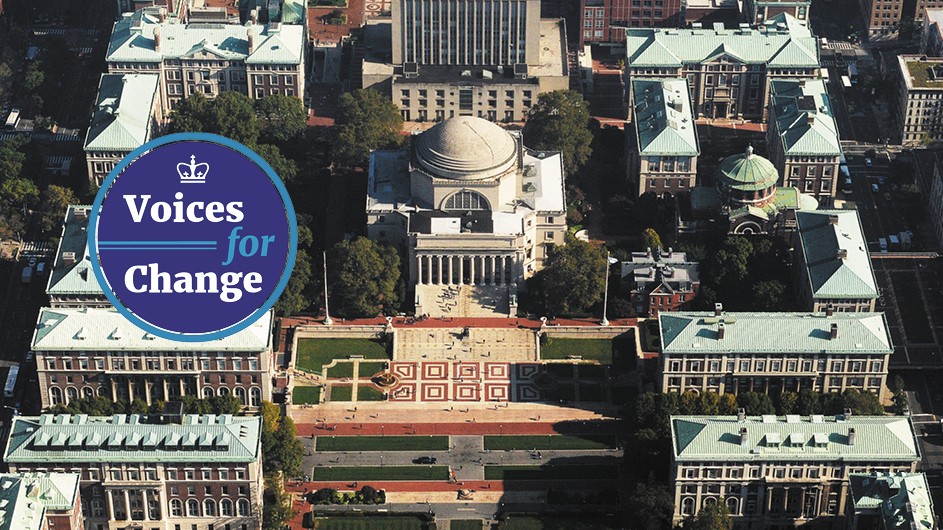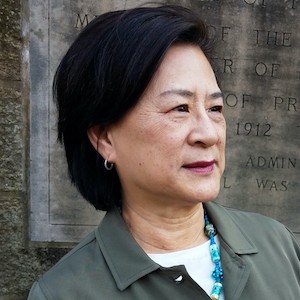Voices for Change

Mae Ngai, Lung Family Professor of Asian American Studies, Professor of History, and Co-Director, Center for the Study of Ethnicity and Race
A Broader, More Complex Understanding of Race and Racism
President Bollinger called the University to action summer 2020, in response to the murder of George Floyd, which sparked mass protests and galvanized a national reckoning with systemic racism. Every school has responded to that call.

For reasons that are understandable the initial antiracist initiative of the University centered on anti-Black racism. The moment has arrived, however, for a broader and more complex understanding of race and racism. This includes the need to promote more research and teaching, as well as greater faculty and student diversity, with regard to Native American, Latinx, and Asian American peoples.
The late Afro-British sociologist Stuart Hall famously wrote that we ought not understand “racism in general but racisms.” According to Hall, racism might be everywhere a “deeply anti-human and anti-social practice,” but it is not “everywhere the same.” While anti-Black racism is rooted in slavery and its afterlives, the Native American experience derives from settler colonialism, removal, and ongoing dispossession.
War and colonialism have shaped the specific racial formations and material inequalities faced by Latinx and Asian American people from the 19th century to the present. There’s much to unpack to understand the myriad racisms that are shot through our history and our present, and how each strand of experience is unique as well as related to that of others.
To be sure, there is already some work at Columbia that takes up this challenge. The office of Multicultural Student Affairs and the office of University Life provide resources for students of color, such as advising; support for DACA and undocumented students; and resources for combatting anti-Asian racism. But the University must do better in the hiring and retention of faculty of color, especially Latinx scholars. We lack the resources to meet student demand for courses in Latinx, Asian American, indigenous, and comparative race and ethnic studies.
More than specific programs and initiatives, Columbia needs a broader, overall framework for addressing race and racism. A reckoning with the multiple racisms in the United States and the challenges of creating a truly diverse, just, and equitable university—in its research, curriculum, faculty, and student body—requires not only greater commitment of resources but also a commitment to collectively think hard about the complexities of race and racisms.
Focus on the Center for the Study of Ethnicity and Race
The Center for the Study of Ethnicity and Race (CSER) was founded in 1998 in response to a student hunger strike that demanded an ethnic studies program. CSER is home to a robust undergraduate program, which has more majors and concentrators than any other interdisciplinary program, and an exciting Master’s degree program in American Studies.
Add Your Voice
Our undergraduate students are Native American, Latinx, Asian American, Black, and white; they come from Columbia College, School of Engineering and Applied Science, General Studies, and Barnard. The most popular specialization is comparative race and ethnic studies. CSER’s core curriculum includes two courses, “Colonization and Decolonization in the Making of the Modern World,” on the dynamics of cross-cultural contact and relations of power from the 17th century to the present; and “Race and Racisms,” on the development and deployment of the race concept in various intellectual and scientific traditions from the mid-19th century to the present. We run multiple sections of these classes each year but still cannot meet student demand.
The Center has been a locus for students of color to learn, create, and organize together, along and across ethnic lines. It has been an interdisciplinary space of intellectual and collegial support for graduate students who work on questions of race and racism. Yet CSER is woefully underfunded and understaffed. Our faculty to student ratio is 18 to 1, compared to the College, which reports a faculty to student ratio of 6 to 1.